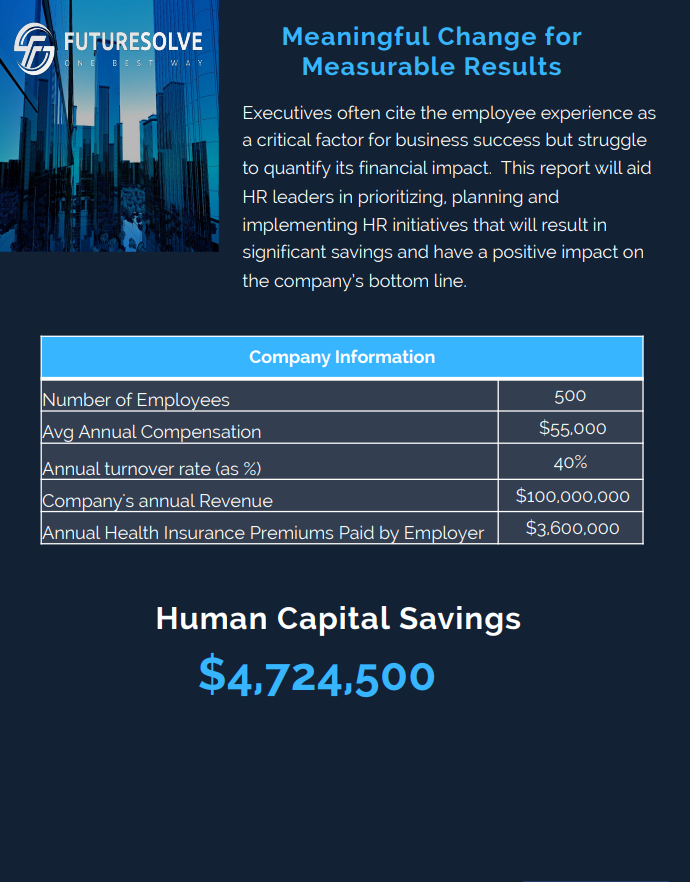The Great Resignation, alternately known as the Big Quit, is an economic phenomenon wherein a record number of employees voluntarily resigned from their jobs in colossal numbers in 2021, mainly in the United States of America. Professor Anthony Klotz of Texas A&M University propounded the idea of the Great Resignation in May 2021. He predicted that the world and the United States, in particular, would bear testimony to a never-before-seen exodus of employees leaving their jobs after the Covid pandemic ends. Life returns to the new ‘normal.’ The Big Quit is essentially a ripple effect of the pandemic as workers began evaluating and consequently quitting their jobs en masse.
In August 2021, 4.3 million Americans quit their jobs. The resignations peaked in April 2021, remained static at an abnormally high rate for several months, and peaked at a record-breaking 10.9 million job vacancies in July 2021. As a result, the ‘quit rate,’ which is a measurement against total employment, rose to 2.9 percent in August 2021, as per the United States Labor Department Statistics.
Background of the Big Quit
Before understanding the underlying nitty-gritty of the Big Quit, we have to understand the resignation rates pre-pandemic. In the 20 years proceeding February 2021, the resignation rates of the United States did not surpass 2.4 percent of the total workforce per month. It is noteworthy that high quit rates symbolize a stable and thriving economy, with workers positing enough confidence in their ability to get higher-paying jobs. On the contrary, during phases of elevated unemployment and cinching economic development, the resignation rates decrease as the hiring rates decrease.
The resignation rates of the USA during the beginning of the Covid19 pandemic followed the generic pattern of low resignation rates and high layoff rates. However, in March and April 2020, 13 and 9.3 million workers were laid off, a record number. The quit rate consequently dipped down to a seven-year low of 1.6 percent. Moreover, it is crucial to highlight that the cohort most affected by these initial layoffs are disproportionately women who worked in the service and childcare sectors and were most impacted by the nationwide lockdowns. Consequently, with the continuance of the pandemic and the acceleration of the vaccination program, workers got the opportunity to ex-examine their relationship with work. As a result, employees began viewing the erstwhile drudgery of regular 9-to-5 commuting in a new light. Thus, from April 2021, the foreseeable layoff rates were alternated by a mammoth-sized–phenomenon that is paradoxical when both labour shortages and unemployment rates are skyrocketing at the same time.
Listen to our Podcast here
Key Trends of the Great Resignation
Before getting into the causes and consequences of the Big Quit, let us observe the two stark trends associated with the phenomenon.
- Resignation Rates Are Highest Among Mid-career Employees – A study conducted by Ian Cook –reveals that employees between 30 to 45 years of age had the most extraordinary spike in resignation rates. While turnover is usually the highest among younger employees, the study illustrates that resignations are reduced for workers in the 20 to 25 years category. The trend is because of several factors, such as greater financial insecurity in the young cohort and reduced demand for entry-level jobs. It is also interesting that the resignation rates fell in the 60 to 70 years age group. The high resignation is driven by mid-level employees and is possibly a culmination of the work-from-home that followed the pandemic. Employers probably began feeling sceptical about hiring people with little to no experience, as they will not have the benefits of in-person training and guidance and vicarious learning. Thus, a great demand for mid-level employees arose, giving them greater leverage to resign and look for better opportunities. Another possible reason for the massive resignation of mid-career workers is a delayed transition out of their roles, and the Big Quit may be a result of a year’s worth of pent-up resignations. Lastly, we cannot ignore the tangible effects that months of high workload, hiring freezes, and others might have had on workers, compelling them to re-think their profession ad life objectives.
- Resignations are Inflated in the Tech and Healthcare Industries – The study conducted by Ian Cook also reveals dramatic differences in turnover rates of different industries. The resignation rates slightly decreased in the manufacturing and finance industry; contrarily, 3.6 percent more health care employees leave their jobs than in the previous year. Likewise, in the tech industry, resignations increased by 4.5 percent. The general observation is that resignations were higher among employees who worked in fields that witnessed a sudden and unprecedented demand due to the pandemic, causing higher workload and burnout.
Causes of the Great Resignation
- Post-pandemic Stress and Burnout – Many experts opine that the Big Quit results from a traumatic response to the personal and professional stresses o the Covid19 pandemic. As per The Wired, the real takeaway of the Big Quit is to acknowledge that people are leaving their jobs in the first place due to rampant stress, shift to remote work, and the uncertainty of the pandemic. Thus, we cannot brush the epiphanic and evaluative causes of the Great Resignation aside as being unimportant.
- Dissatisfaction and Disengagement of Workers – As per Gallup and their data, the Big Quit is premised on the discontentment of workers. Rather than entirely being an ‘industry-oriented’ issue, the Great Resignation is a workplace issue. So, in addition to ‘white-collar burnout’ facilitated by remote work and high work pressure, the resignation rates in 2021 are also massive for the leisure and hospitality industry. Thus, the Big Resignation is also the consequence of a systemic professional ambience embodied by prolonged discontentment. Moreover, despite having myriad causes, the Big Resignation is propelling a snowball effect wherein workers who were previously unlikely to contemplate quitting their jobs are now doing precisely that.
- Tilted Labor Relations – Several experts herald that ‘the Great Resignation’ is a wake-up call that labour relations are parched off imperative changes and improvements. In one of its monumental pieces, The Guardian wrote that the Big Quit is the ideal time for workers to demand better working hours, better pay, and work-life balance. It is also the optimal phase for sections such as women and people of colour to demand the breakdown of institutional biases in the professional sector. Forbes predicts that the Big Quit is a crucial moment in American history and will usher in an era of professional space marked by flexibility, skill-based hiring, and training opportunities.
- The Big Switch – Another opinion that deserves attention is that the problem of the Great Resignation is not about resignation at all. The macroeconomic phenomenon plaguing the United States is that the quit is a ‘job-switching’ revolution. The increase in resignation is mostly about ‘low-wage’ workers transitioning to better-paying jobs in sectors raising wages to fill the supply-demand gap quickly. The low-wage service sector economy is experiencing what we call ‘free agency’ in a professional sports club. For example, the accommodation and the food-services industry that primarily consists of restaurants and hotels have seen more quits than any other area of the economy. On the flipside, and quite paradoxically, the food and accommodation sector of the USA also created one out of every three net new jobs in 2021, adding about 2 million employees in total. Thus, it is vital to recognize the Big Quit as a cathartic concept of the Big Switch.
- The Limitations of Predictions and Theories – Another crucial point that we have to note about the Big Quit is that everything is not as straightforward as it may appear in statistical reports or articles. As per the BBC, few people resign as we are conditioned to conjecture. The number of people actually leaving their jobs is 3 percent, and much of the hue and cry is around people who are ‘thinking’ of leaving their jobs. The factors driving the Great Resignation are so diverse and varied that its outcome will look different depending on the industry and the types of jobs.
Now that we have explained in detail the various dimensions of the Great Resignation, let us glance at some of the tactics through which companies and employers can navigate the phenomenon and better prepare for the future.
Ways to Prepare for the Post-Big Quit Era
- Data-driven Approach – Organizations and companies should take the help of AI, automation, and data-driven technologies to foster employee engagement. Co-opting groundbreaking AI-based technology to know about the possible retention rates, discontent, and disengagement among workers and working out a plan to retain the employees is crucial.
- Innovative Benefit Plans – the significance of flexibility and innovation should not be undermined when tackling the ripple effects of the Great Resignation. A hybrid workspace with offline and online work options coupled with tangible payment benefits is a crucial way to handle the consequences of the Big Quit.
- A Workspace with Purpose – The workspace culture heavily influences employee experience. Harbouring a positive and empowering professional space characterized by continuous learning, transparency among leaders and managers, and an open communication channel can contribute to a healthy and purposeful workspace.
- Investment in Upskilling – Companies must give up on the ‘hire and fire’ strategy and invest in Upskilling their employees and managers to bring forth holistic growth and development. Offering training and professional courses to the workforce is an excellent way to decrease turnover rates and deal with the Big Quit efficiently.
- Tapping in New Talent – The hour’s need is to tap the talent warehouse available among the country’s young population. Using new and innovative approaches to hire high schoolers and college graduates is a phenomenal way to deal with the Great Resignation. Platforms such as Talent Hiring can be the go-to solution for companies to find relevant talent faster.

Daniel Marsili
Former CHRO Colgate-Palmolive Company

Ceree Eberly
Former CHRO
The Coca Cola Company

David F. Kozel
Previous CHRO PVH Corporations

Stephanie Wemusa
Executive Advisor
DEI&B

Sandhya Johnson, Ph.D.
Executive Advisor

Jim Lynde
Previous CHRO
Spirit Airlines
What is CHRO and why is this role becoming more and more important?
A CHRO is regarded as one of the senior-most managers in an organization. A CHRO is responsible for leading other HR managers while also indirectly managing all the employees within an organization.
Some of the core responsibilities of a CHRO are designing and implementing HR strategies, alignment HR functions within the objectives of the company, recruiting & retaining employees, and managing the entire company culture.
The right CHRO role or leadership can do wonders for your organization with respect to contributing to business while offering strategic value like organization planning, people analytics, and leadership development.
What to expect in 2023?
The priorities of CHRO in 2023 can include anything ranging from employee upskilling to rewarding the workers. Achieving the objectives of the core CHRO priorities for respective HR function will serve as the core enabler for ensuring the overall success of any business. Improving operational excellence will be a critical measurement of unmatched success in 2023 as well.
Some of the top priorities of CHROs for 2023 will be:
- Making mental health and wellness of employees a priority
- Building crucial skills and competencies
- Improving the overall employee experience
- Adopting new strategies for recruitment
- Ensuring HR digital transformation
- Ensuring diversity, inclusion, and equity
- Handling crisis management





























